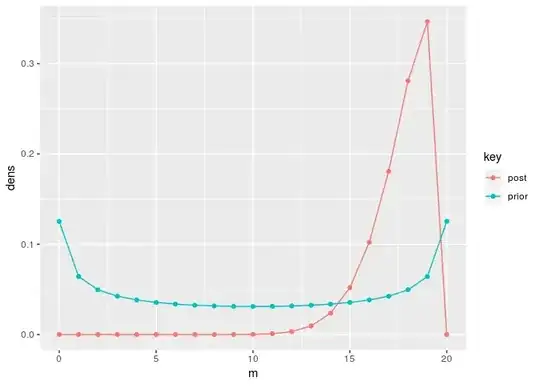The problem with the Wikipedia article and the reference therein (Fink D., 1997) is that there is some key information missing.
Specifically, the given posterior is for $M-x$ (i.e. the number of target individuals in the population shifted by the number observed in the sample), not for $M$. Furthermore, the posterior parameter corresponding to the number of observations is missing and should be $N-n$ (i.e. the population size minus the sample size). These two corrections fixes the support problem that you correctly noticed, as shown below.
Suppose that $0 \leq X \leq n$ is the number of target
individuals in a sample of size $n$ from a population of size $N$ with
$0 \leq M \leq N$ total target individuals.
Then, $X \sim \text{HG}(n, M, N)$ with support in $[\max(0, n-N+M), \min(n, M)]$.
If $M \sim \text{BB}(N, \alpha, \beta)$ is the prior distribution of $M$, the posterior distribution for $M - x$ is also Beta-Binomial-distributed:
$$M - x\,|\,x,\alpha,\beta \sim \text{BB}(N-n, \alpha + x, \beta + n - x)$$
If you write the probability mass function for $M$ you will find @Tim's answer above.
As an illustration, for $N = 20$ and $n = 10$, let's assume a non-informative prior distribution for $M$ with $M \sim \text{BB}(N, .5, .5)$.
Suppose that we observe $x = 9$.
library(extraDistr)
library(tidyverse)
N = 20
n = 10
a0 <- b0 <- .5
x <- 9
data.frame(
m = 0:N
) %>%
mutate(
prior = dbbinom(m, size = N, alpha = a0, beta = b0),
post = dbbinom(m-x, size = N-n, a0+x, b0+n-x)
) %>%
gather(key, dens, -m) %>%
ggplot(aes(m, dens, col = key)) +
geom_line() +
geom_point()

Created on 2018-10-10 by the reprex package (v0.2.1)
Note that the posterior support is correctly [x, N − n + x].
Dyer, D. and Pierce, R.L. (1993). On the Choice of the Prior
Distribution in Hypergeometric Sampling. Communications in Statistics
- Theory and Methods, 22(8), 2125-2146.
